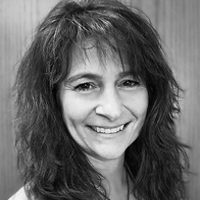Question
I am incorporating diagnostic vestibular testing into my department's practice and would like develop a protocol that incorporates best practices to minimize risks and to provide the most accurate and consistent results across practitioners and office locations. Any suggestions?
Answer
In setting up protocols for vestibular testing in order to prevent errors and ensure accuracy, there are several factors to consider.
Beginning with the initial appointment, you want to make sure you provide patients undergoing an ENG or VNG specific instructions on preparing for the testing. These can be given over the telephone, and followed up with written instructions mailed or emailed to the patient. If these instructions include refraining from taking certain medications such as those that suppress dizziness and vertigo, abstaining from caffeine or alcohol, or limiting food intake, you need to confirm this during your intake on test day. You may have to be very specific in your questioning, as you will find that some people's perceptions of things like "medication" and "alcohol" do not line up with your intended meaning.
Certainly the physical well being of the patient is a concern. Since you will be manipulating the patient's head and body, you need to know if they have any restrictions or injuries that would preclude the most accurate testing. Older patients might not be able to lie back very quickly during a Dix Hallpike. How does that impede your ability to collect the data that you want to collect?
Are you fatigued? If you're tired, stressed or are not feeling well, that might hinder your ability to move a patient rapidly or task a patient sufficiently. Sometimes we get very rote in what we are doing, and while we might recognize that we have done hundreds of ENGs in our career, this is the one and only ENG/VNG that this patient will experience. They are looking to you to be at your best to provide this test. When tasking, you must understand your patient's level of education, comprehension and language. You do not want to task them with something that is out of their comfort zone.
Eye blinks can be a source of error. Knowing the difference between an eye blink and nystagmus is one of the hardest things for new clinicians to learn. Computerized systems are much better at discerning that, but as a clinician, you still need to be knowledgeable about the true nature of the recording or a misdiagnosis can occur. The patient must be accurately positioned for all positional maneuvers or a physical error will occur. Middle ear measures must be taken prior to performing caloric tests. A middle ear dysfunction will also skew your results.
The electrodes and goggles must be placed with care. Sometimes we might forget to close the goggles, which directly impacts the validity of the test. Secure the patient's head to the headrest of the rotary chair;secure the harness if performing posturography. If you find an error during testing, go back and fix it if time permits. Remember to document everything.
Do not rush the testing. We need to base the length of the test on the patient's status, both mentally and physically. If we do not allow the recording go long enough, we might miss a delay of onset or reversal. These are places where the errors occur. We cannot be experts in everything. If you feel that you are not able to provide all the services that are required for a particular patient, refer to a clinic or facility that provides that expertise. Knowing when to refer is an important clinical skill, and not doing so when a referral is in order would likely be considered a clinical error.
Certainly, look to evidence-based research to support your clinical decision-making, and utilize online and in-person trainings to ensure you and your staff are aligned with current best practice guidelines and that you stay up to date.
These are a few of the things to keep in mind when setting up your vestibular protocol;I hope it is helpful to you. Thank you for your question.
Editor's Note: This Ask the Expert was taken from the eSeminar Preventing Medical Errors for Audiologists - 2011 Update published on 6/23/2011. To access the recorded course, please go here. www.audiologyonline.com/ceus/recordedcoursedetails.asp?class_id=18865
Suzanne M. Younker, Au.D, FAAA;Quality Management Specialist, HearUSA. Suzanne began with HEARx in 1989 and has continued there for the past 21 years. Frequent career opportunities had enabled her to work in many cities in Southeast Florida - Hollywood, Pembroke Pines, Boca Raton, Lake Worth, and West Palm Beach, - flourishing in all aspects of audiology. From 1996 to the present, Suzanne has been a Corporate Quality Management Specialist at HEARx/HearUSA in West Palm Beach, Florida, with a broad spectrum of professional duties for the +200 company-owned offices including: reviewing medical reports, interviewing potential new employees, coordinating the company's new employee training program, managing the company Customer Service Department, and coordinating company specialized diagnostic CEU courses. Educational accomplishments include obtaining her Au.D. degree from A.T. Still University's Arizona School of Health Sciences in August 2004. Extra-curricular professional accomplishments included membership on the Board of the Florida Academy of Audiology as Vice President of Membership in 2006-07 and President in 2008. Additionally, since 2006, Suzanne continues to participate in the State of Florida Audiology Review Committee for Pediatric Providers. For more information about HearUSA, visit the HearUSA web channel on AudiologyOnline.
